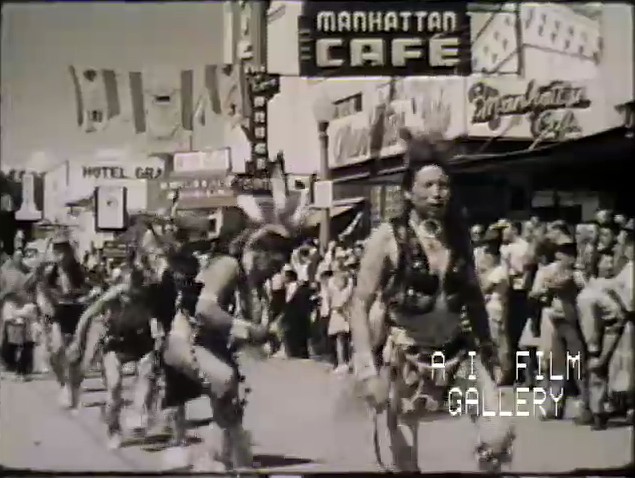When the UA received the American Indian Film Gallery, an original collection of over 450 non-fiction films from the mid-1900s exploring the cultures of Native Americans, Jennifer Jenkins was convinced that the university should do more than simply host a display of the coveted film collection.
From this inspiration, Jenkins, an associate professor in the Department of English, has created a unique project that is rousing recognition and excitement. She and a research team will spend the next three years traveling to native communities in Arizona and New Mexico to conduct interviews and record narratives from modern-day native cultural groups. Then, they will add these perspectives to the decades-old films, creating a more accurate account of Native American culture.
RELATED: March is for Arizona archaeology and heritage
While the mid-century educational films can be a convincing first-hand resource, they may reflect mainstream views of minority culture during this time period and not tell the entire story. Jenkins has made it her mission to give a voice to the cultural insiders, allowing them to take a dominant role in their own story.
“Think about it this way: you wouldn’t want strangers explaining your family’s home movies and defining your activities according to their outsider perspectives,” Jenkins said.
These updated films will feature representation from the Tohono O’odham, Akimel O’odham, Inde (Apache), Diné (Navajo), several New Mexico Pueblos and two ancestral cultures. Jenkins said she got in touch with Tribal Narration Coordinators and Tribal Cultural Preservation Officers from these groups through her former students who work in tribal libraries and foundations.

When the narratives are finished, the new audio will be linked to the educational films and presented to the public in an online streaming site. Jenkins said the team will use an online platform called Mukurtu to marry the old video and the new audio together. Viewers can choose to hear the new stories in English, Spanish or Native languages. Jenkins described this process as “tribesourcing”— “marry[ing] the old video and the new audio together. Viewers can choose to hear the new stories in English, Spanish or Native languages.”
Tribesourcing is all about using current recorded material to readdress and rebalance past films to be more accurate and relevant for modern audiences, cultural communities and students. Jenkins said this helps identify and bring attention to people, places, vocabulary, stories and culture that might otherwise have been lost.
“By recording alternate narrations in English and in Native languages, this project will balance the historical record, intentionally shifting the emphasis from external perceptions of Native peoples to the voices, knowledge and reflections of the peoples represented in the films,” Jenkins said.
The UA Confluencenter for Creative Inquiry, the UA Vice President for Research’s Faculty Small Grants Program and the National Endowment for the Humanities have provided funding for this $455,294 project.
The extensive project is expected to make a significant impact on members of Native communities. Jenkins said she expects to give the films a renewed meaning, where the people and places that appear onscreen will be rightfully identified, and the films will kindle memories and stories that will enrich the Native community’s history.
RELATED: Build benches not borders
Through the tribesourcing team’s work, UA students will get to see first-hand how true collaborative, consultative and respectful engagement with other cultural groups can be conducted.
Involvement in this project creates “a unique opportunity to train the next generation of librarians, archivists, and digital humanists in best practices and ethical standards when dealing with cultural properties and legacy media artifacts,” Jenkins said.
When the updated films are complete, Jenkins anticipates that the educational and cultural reach of the American Indian Film Gallery will expand significantly as well as Native community engagement throughout its development and dissemination.
“As a film historian, I’m of course thrilled when vintage films that might be dismissed as outdated can be repurposed in productive and culturally sensitive ways,” Jenkins said. “Tribesourcing is just the right thing to do.”
For more information on the tribesourcing project, visit www.aifg.arizona.edu.
Follow Kathleen Kunz on Twitter.









